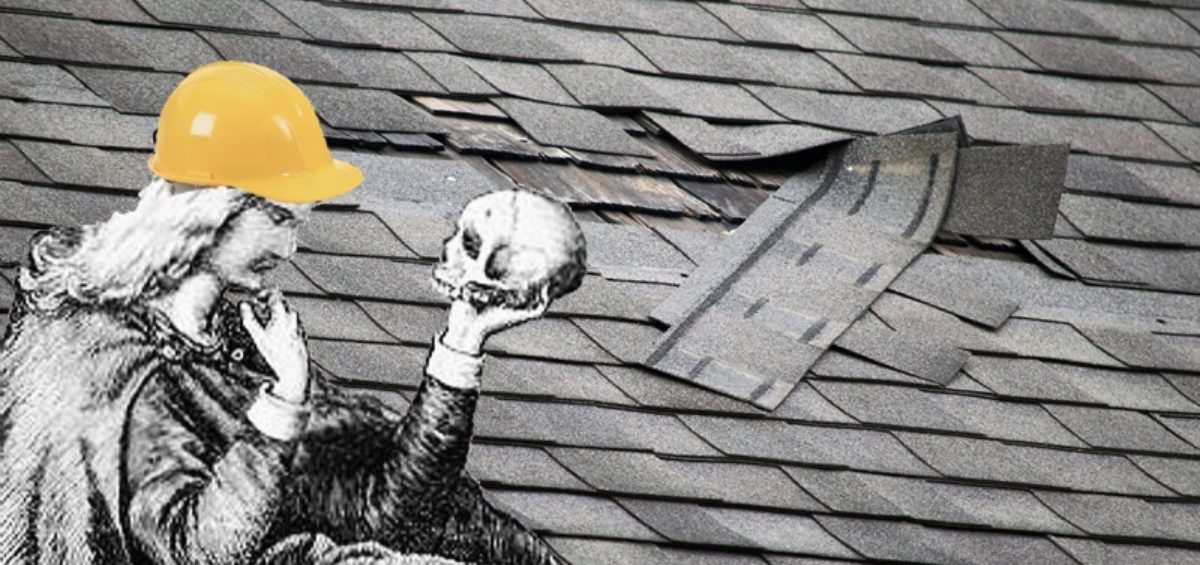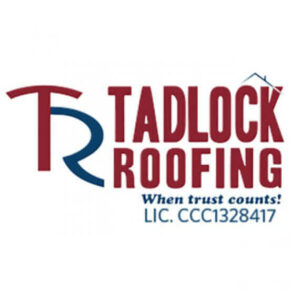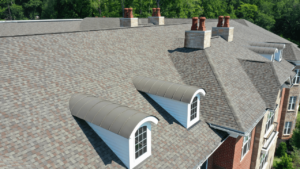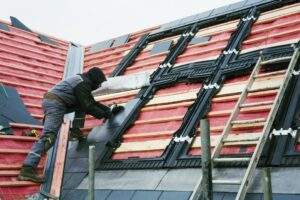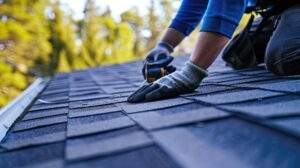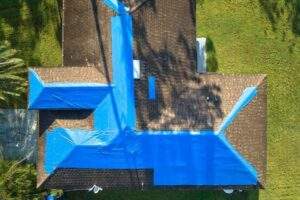Dark spots, light from the outside shining through a hole and a sag are signs that your roof is damaged and needs attention. A damaged roof is often overlooked by homeowners because it isn’t the most obvious flaw that catches the eye. Besides, a bucket placed below a leak can solve the problem (temporarily).
But did you know that mold that grows on leaking roofs can cause serious respiratory problems such as coughing, wheezing, nasal stuffiness and throat irritation? Definitely a nightmare for people who suffer from asthma. If you can see daylight through your roof, it could mean that it’s missing shingles or that the decking has weakened due to moisture. Roof leaks can also cause your insulator to function less efficiently, which could result in abnormally high energy bills. Further, the combination of a short wire and a roof leak can create fireworks inside your house. The problems caused by damaged roofs can be detrimental and just like any household damage, they cannot be ignored. If anything, the damage only gets worse over time due to exposure to the sun and rain. In severe cases, roofs have even collapsed unexpectedly.
If you see signs of damage in your roof, ignoring them may be easier but that isn’t the smart option. Have a professional inspect it and tell you honestly whether it requires immediate attention. If you have a multi-layered roof, it may not be easy to detect any damage. Like they say, “Precaution is better than cure.”
When you have detected damage in your roof, the next question would be whether your roof requires a repair or a replacement. Sometimes, the damage may be small and you can resolve it with a simple repair, which obviously sounds like a cheaper fix. But when it’s big, choosing to save money by “repairing” will only make you pay twice — first for the repair and then for the replacement.
When should you choose to repair your roof?
-
When the damage is small or has affected only a small part of your roof, perhaps two or three shingles, then you would choose to simply repair your roof. In fact, you could even do this by yourself without calling for experts.
-
If you have time constraints and need to fix the problem urgently, a repair may be a faster alternative than a scheduled replacement. This is not advisable, but in some instances, for example, when you have to be away from home due to travel, this may be a wiser option.
-
If your roof is still new (less than a decade old), it would mean that it is still strong enough to withstand sunshine and rain. In such cases, you can still repair it because there is still more life to your roof.
So repairing is possible. Why would you replace your roof entirely then?
-
Sometimes the damage is too big to fix. If your roof is sagging, its deck or a large area of it is damaged, repairing will only temporarily solve the problem and sometimes, it may not solve it at all. You may pay two or three times the amount repairing and re-repairing your roof only to realize one day that you could have saved all that money had you replaced it in the first place.
-
A roof that is old (20 years for example) may have lost its resilience due to extreme weather conditions. Such roofs may not be able to withstand damage, and repairing it may not solve the problem. A replacement is the only solution.
-
The State of Florida mandates that if more than 25% of the surface area of the roof is replaced within a rolling 12-month period, the entire roof must be replaced. “Not more than 25 percent of the total roof area or roof section of any existing building or structure shall be repaired, replaced or recovered in any 12-month period unless the entire roofing system or roof section conforms to requirements of this code.”
An important factor to consider when deciding whether to repair or replace your roof is its age. The general idea is that an older roof will have to be replaced, but some roofs have a longer life than others. Slate roofs have an average lifespan of 100 years. Metal roofs can last up to 40 years. And asphalt roofs have the shortest life and can last up to 20 years. Of course, heat, poor gutter systems, poor maintenance, and poor UV protection can reduce the life of your roof. When this happens, you have no choice but to replace it.
A very common mistake most homeowners make is choosing to repair because it is cheaper in the short-term when replacement is a wiser option. This is especially the case when the house has children or elders who could suffer from respiratory problems as a result of roof leaks. Unless repairing the damage is practical, replacing it is more economical in the long run. Replacing your roof will also give you a chance to change it to one that is more resilient and of better quality.
The best way to go about this would be to have one of our Roofing Professionals come to take a look at your roof for a free inspection. They will tell you your options and their opinion of whether you should repair or replace it. Here is a list of the pros and cons of repairing and replacing your roof. The goal of this list is to aid you in making the best decision after consulting an expert:
REPAIRING
Pros
-
Cheaper in the short term
-
Is a quick fix for roof damage
-
Is the solution when the damage is detected at an early stage
Cons
-
May not permanently fix the damage
-
Cumulatively, could cost more than an entire replacement
-
Is not the answer when damage is detected in an old roof
REPLACEMENT
Pros
-
Is a permanent solution to the problem
-
Gives you the opportunity to replace your existing roof with a one that is stronger and more resilient
-
Is the only solution when your roof has exceeded its optimum life
-
A one-time investment
Cons
-
The initial investment may be high
Now that you are equipped with just enough information regarding both alternatives, you should be able to make the best decision for your roof. If you are not a victim of roof damage yet, this information may come in handy in the future. But we advise you to hire an expert to conduct a full (free) inspection of your roof before making your decision to repair or to replace. Some damage does not manifest itself visibly and may need immediate attention. This could save you from unexpected expenses in the future and help you maintain your existing roof so it can last longer.


